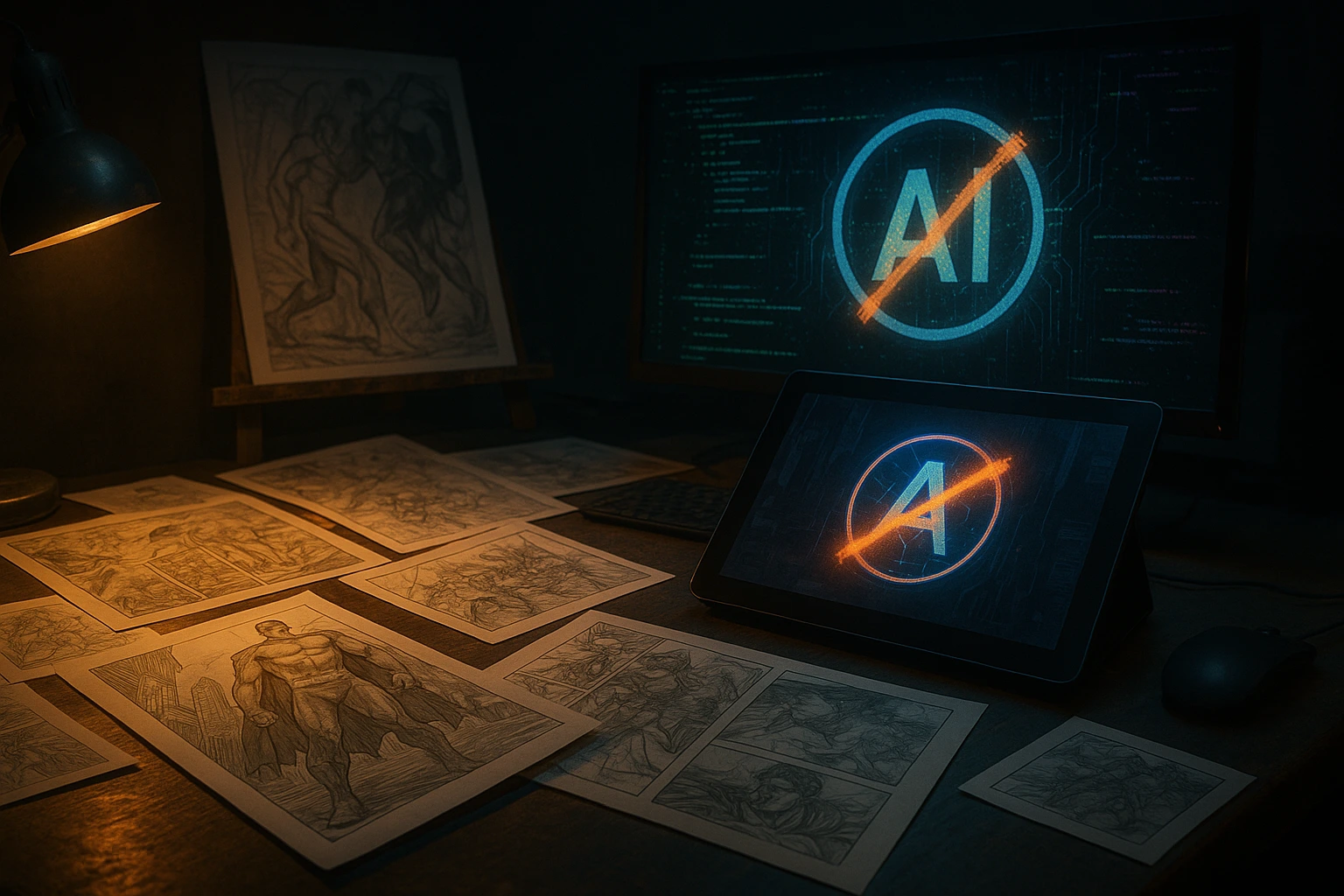DC Comics has officially declared war on artificial intelligence in art and storytelling. During New York Comic Con, Chief Creative Officer Jim Lee stated that the publisher will never allow AI-generated content under his leadership.
“We’re not doing AI art. Not now, not ever,” Lee said, reaffirming DC’s commitment to authentic creativity. The statement comes amid heated debates about AI’s growing role in entertainment and its potential to undermine the work of human artists.
Background: Controversy Over AI in Entertainment
DC’s announcement follows several public controversies involving AI-generated material. Warner Bros., DC’s parent company, previously faced backlash after using a digital recreation of the late Christopher Reeve in The Flash. Fans and critics condemned the move as exploitative, reigniting concerns about AI ethics in media.
Additionally, comic artist Francesco Mattina was accused of using AI tools to create cover art for DC titles, further fueling community frustration. The DC Comics AI art ban now serves as a public statement to restore trust and distance the brand from synthetic artistry.
Industry-Wide Reactions
The response from fans and creators has been overwhelmingly positive. Many praised DC for protecting the integrity of human creativity. Artists within the comics industry described the move as a “necessary stand” against a growing wave of automated production.
Marvel Comics quickly echoed DC’s position. Editor-in-chief C.B. Cebulski confirmed that Marvel also prohibits the use of AI in any stage of its creative process. Both publishers now appear united in reinforcing traditional artistry as the foundation of comic storytelling.
Ethical and Creative Implications
The DC Comics AI art ban highlights a deeper ethical divide within the creative world. Supporters argue that generative AI exploits human work by learning from existing art without consent. They believe banning AI tools safeguards fair credit and artistic ownership.
However, others claim that completely rejecting AI ignores its potential as an assistive technology. Some creators use AI for early concept visualization, arguing that the problem lies in misuse, not the technology itself.
Still, DC’s decision positions the company as a defender of artistic authenticity—an increasingly valuable stance in a market saturated with AI-generated visuals.
DC’s Human-First Vision for the Future
Lee emphasized that storytelling at DC will continue to rely on human creativity, collaboration, and emotional depth—qualities that AI cannot replicate. The company aims to preserve the craftsmanship that defines its iconic characters, from Batman and Superman to Wonder Woman.
This philosophy aligns with DC’s broader brand message: creativity born from human experience, not algorithms. By taking a definitive stand now, DC ensures its future stories remain rooted in originality and emotion.
Conclusion
The DC Comics AI art ban reinforces the company’s dedication to genuine artistry and creative ethics. While the entertainment industry experiments with AI, DC draws a clear boundary—its heroes, worlds, and visuals will always come from human imagination.
In an era where synthetic art dominates headlines, DC’s declaration is more than a policy—it’s a statement of principle: creativity belongs to people, not machines.


0 responses to “DC Comics Declares War on AI Art”